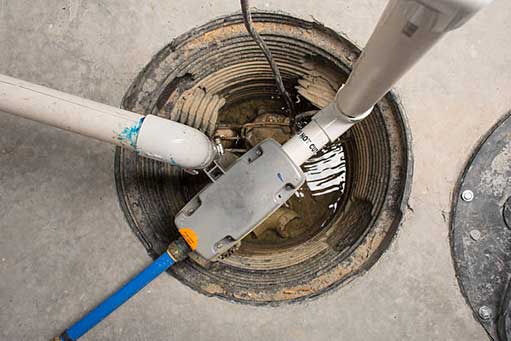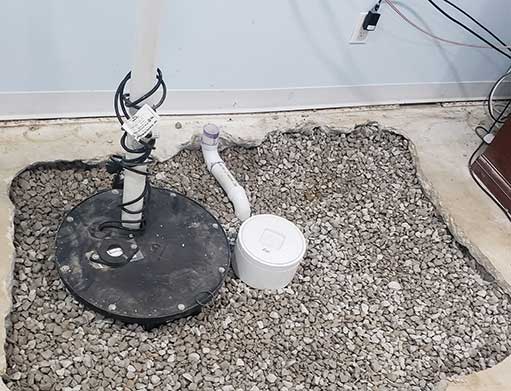Understanding the Role of Ejector Pumps in Addition to Sump Pumps
When it comes to maintaining a dry and secure basement, having a reliable system in place is essential. Sump pumps are commonly used to remove excess water from basements and prevent flooding. However, some homeowners may wonder if the addition of an ejector pump is necessary to enhance the effectiveness of their sump pump. In this article, we will delve into the benefits and functions of both sump pumps and ejector pumps, clarifying whether or not you need an ejector pump if you already have a sump pump.
Understanding Sump Pumps
Sump pumps are typically installed in the lowest part of a basement or crawl space. Their main purpose is to collect excess water from the surrounding area and pump it away from the building, preventing water damage and the formation of mold and mildew. Sump pumps are activated by a float switch that senses the water level in the sump pit and activates the pump when it rises above a certain threshold.
These pumps are generally effective in handling moderate water influxes from rainwater, plumbing leaks, or groundwater seepage. However, they may have limitations when it comes to handling other types of wastewater, such as sewage or gray water.
The Role of Ejector Pumps
Ejector pumps, also known as sewage ejector pumps, are specifically designed to handle the disposal of wastewater containing solids or semi-solids. Unlike sump pumps, which are primarily designed for clean water, ejector pumps can safely and efficiently handle the discharge of sewage from toilets, sinks, washing machines, and other household fixtures.
Ejector pumps are typically installed in basements or lower levels of a building to receive wastewater from below-grade plumbing fixtures. They operate by grinding solid waste into smaller particles and then pumping it into the main sewage line or septic tank.
While sump pumps are not equipped to handle solid waste, ejector pumps are specifically designed for this purpose, making them indispensable in homes with basements that house below-grade bathrooms or laundry rooms.

Having both pumps in place provides comprehensive protection against various types of water issues, ensuring that clean water and wastewater are handled appropriately.
Do You Need an Ejector Pump If You Already Have a Sump Pump?
The need for an ejector pump alongside a sump pump largely depends on the specific plumbing setup and the presence of below-grade fixtures that generate sewage or wastewater containing solids. If your basement does not house any below-grade plumbing fixtures, such as a bathroom or laundry room, and the water influx is primarily clean water, a sump pump should be sufficient to handle the situation.
However, if you do have below-grade plumbing fixtures and there is a possibility of sewage or wastewater containing solids entering the basement, it is highly recommended to install an ejector pump in addition to your sump pump. This will ensure the safe and efficient removal of sewage and other wastewater, reducing the risk of backups, clogs, and potential health hazards associated with improper waste disposal.
The Benefits of Having Both Sump Pumps and Ejector Pumps
By choosing to install both a sump pump and an ejector pump, homeowners can enjoy several key benefits:
- Comprehensive Protection: Having both pumps in place provides comprehensive protection against various types of water issues, ensuring that clean water and wastewater are handled appropriately.
- Preventing Basement Flooding: A sump pump is excellent at keeping the basement dry during heavy rainfall or plumbing leaks, while an ejector pump can handle sewage and wastewater, reducing the risk of backups and subsequent flooding.
- Enhanced Property Value: Homes with functional and reliable basement waterproofing systems, including both sump pumps and ejector pumps, generally have higher market value and can attract potential buyers.
- Health and Safety: Proper waste disposal is crucial for maintaining a healthy living environment. By having an ejector pump in place, you can ensure the safe removal of sewage and wastewater, preventing the spread of bacteria and potential health hazards.
Consult with Professionals for the Best Solution
While this article provides general guidance on the need for an ejector pump alongside a sump pump, it is always advisable to speak with professionals who specialize in basement flood control systems. They can assess your specific needs, evaluate the plumbing setup in your basement, and recommend the most suitable solution for ensuring the efficient removal of both clean water and wastewater.
Remember, every home is unique, and the plumbing requirements may vary. By seeking expert advice, you can make informed decisions and invest in the right systems to maintain a dry and secure basement environment.
In conclusion, while sump pumps are ideal for handling clean water and moderate water influxes, ejector pumps are specifically designed to handle sewage and wastewater containing solids.
If your basement only has below-grade fixtures that generate clean water, a sump pump should suffice. However, if there is a need to dispose of sewage or wastewater with solids, installing an ejector pump alongside a sump pump becomes imperative. This ensures comprehensive protection, prevents basement flooding, enhances property value, and maintains a healthy living environment. Consult with professionals to determine the optimal solution for your specific needs and plumbing setup.
